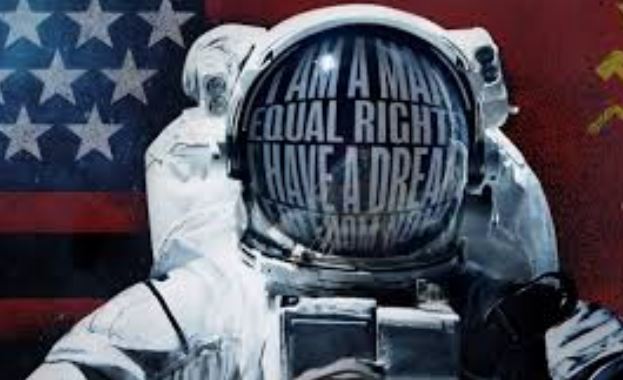[ad_1]
By Mark F. Gray
AFRO Staff Writer
[email protected]
Did you know Robert Lawrence could have been the first African-American astronaut in space? Did you know Ed Dwight might have been the first African-American astronaut on the moon, but couldn’t “make the cut?”
While the acclaimed book and motion picture Hidden Figures told the dramatic story of three Black women who made their impact on the American space program, a new documentary reveals the inherent racism that prevented NASA from putting the first minority astronaut into space.

In conjunction with Black History Month, Comcast, the Smithsonian Channel and Prince George’s Community College (PGCC) held a private screening of the new documentary Black in Space: Breaking The Color Barrier in the new performing arts center on the school’s Largo Campus. The hour-long film depicts how African-American astronauts, whose careers began in the U.S. Air Force in the footsteps of the Tuskegee Airmen, surged “from slavery to space in four generations.”
“This story should have been told a long time ago and we want to impact the viewers and open some eyes to many aspects of history,” Smithsonian Channel Executive Producer Dan Wolf said in an exclusive interview. “This story is not just an African-American story, it’s an American story that’s been neglected far too long.”
Approximately 200 people from the community attended the free event in the college’s new performing arts building, which is fast becoming the County’s new home for cultural arts events since it opened last year. This event was able to show the value of science, technology, engineering and mathematics (STEM) education to young elementary through high school students from the community.
“The film was very informative. I found out about how it was challenging and people of color were neglected trying to get into the space program,” PGCC student Cherea Murphy said.
The documentary, which debuts on the Smithsonian Channel on Feb. 24, describes in great detail how the nation’s polarizing racial tension of the times inhibited several African American pilots from becoming the first astronauts, who could’ve been the “Jackie Robinson of the space program.” Robert Lawrence, who was killed in a training accident, was on the verge of becoming the first African-American astronaut on a mission. His wife recalls how she received a racist letter after his death, where the writer penned the statement that he was glad Lawrence died “because [he] didn’t want to see a coon go to the moon.”
Ed Dwight appeared to be on the verge of becoming the first Black astronaut on a mission to the moon. Dwight spent 9,000 hours in the air, but didn’t make the cut, which provided an opening for the Soviet Union to place the first person of color into space. It took two decades after Dwight became an astronaut trainee before an African-American would go to space.
“I was in the right place at the wrong time,” Dwight said during the film.
The communist regime took advantage by training Cuban Tamayo Mendez, whose Sputnik mission took those cosmonauts around the globe crossing over Little Rock, Arkansas near the time when the “Little Rock Nine” students were integrating their public school system. When Mendez saw Cuba from space, he quipped seeing his nation was like, “looking at a small crocodile that never sleeps.”
The film also remembers the horrific tragedy of the Space Shuttle Challenger that claimed the life of NC A&T alumnus Ron McNair and the story of Guy Bluford would later be a part of another shuttle space transportation system (STS) mission where he launched a communications satellite into orbit.
Following the screening a discussion was hosted by NBC-4 Washington’s Tracee Wilkins of the TV station’s Prince George’s County Bureau, featuring Cathleen Lewis, from the National Air and Space Museum, and Wolf.
[ad_2]
Source link

